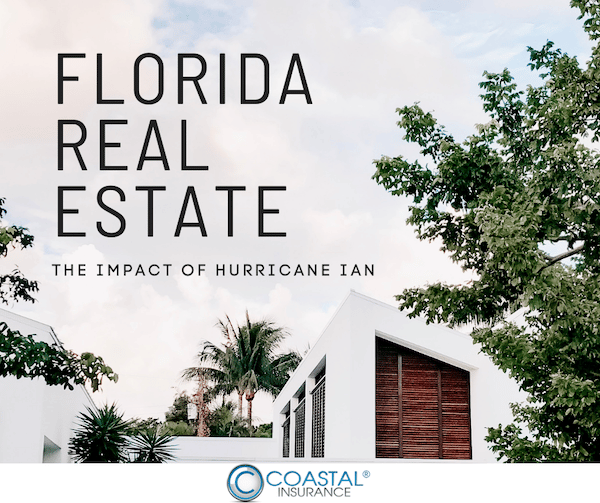
Florida and California steal the headlines with seasonal hurricane and wildfire losses, but across the nation, insurers are tightening underwriting standards. In some cases, insurers are pulling out of certain zip codes or states altogether. It seems counterintuitive for an industry that survives by writing new policies to turn insurance-seeking consumers away. However, the issues facing insurers and customers are more complex than the headlines suggest.
Insurance Losses Are Rising Due To Inflation
In the insurance business, two key metrics drive the numbers: frequency and severity. Frequency simply refers to how often losses occur. Severity describes the size of those losses in dollars. If either or both measures increase, rates must rise to cover the losses. These metrics determine how much insurers must collect in premiums to cover losses. It’s just math. Many areas throughout the country have seen increases in both frequency and severity, more frequent losses and more sizeable losses. There’s some commonality in the contributing causes for severity — with inflation playing a large role — and some regional variances as well, which affect both frequency and severity. Key contributors include weather events such as hurricanes and wildfires, but inflation’s role in increasing claim losses can’t be overlooked. The cost of repairing or rebuilding homes or replacing autos has spiked in recent years, along with the cost of nearly everything else. 2022 was particularly challenging as the cost of building materials spiked over 19% in a single year according to data from the national association of home builders. Lumber prices alone jumped by 47% in a year. Autos followed an even steeper trendline, with the value of used cars rising from just over $21,000 in 2019 to nearly $31,000 in 2022. Insurers use the market values of autos, among other rating factors, to determine premiums and loss settlements for standard auto policies. Insurance companies pay for losses with the premiums they collect. In effect, insurance is a shared-risk pool. We all pay in, and the insurer pays claim settlements to policyholders who have a covered claim. But there was no way to foresee increases in claim settlement costs due to inflation. Many areas have already seen increased premiums as a result, although not always enough to keep up with the increased claim severity seen by insurers. State regulators play a role in the shortfall. More on that in a bit.
Insurance Losses Rising Due to Geographic Risks
Throughout the West, wildfires continue to cause damage to homes and businesses. It’s not just California, although the Golden State has some unique regulatory issues of its own that make it more difficult to get coverage. Homeowners in Oregon, Washington, and even further East in Texas and Colorado report challenges in getting coverage for their homes due to wildfire and storm risk. Insurance is a numbers business. The industry runs on probability. When losses become more difficult to predict, it also becomes more difficult to know how much to collect in premiums. But the red ink of drained reserves makes it clear that current rates aren’t enough to cover future claims. 2022 marked the eighth consecutive year in which natural events caused more than $1 billion in claim losses. In the same year, insurers paid out a staggering amount in home insurance claims, resulting in net losses for the industry. For every dollar collected in premiums on home lines, insurers paid $1.08 in claims. Hurricane Ian alone caused an estimated $55 billion in insured losses. But the effect of storms in the Southeast and along the Gulf, coupled with wildfire and even flooding in the West, has had ripple effects throughout the nation. AIG, which pulled out of the standard lines California market in 2022, has scaled back coverage in other areas, including parts of New York, Delaware, and storm-prone Florida. And the New York-based insurer isn’t alone. Allstate and State Farm, two of the largest broad market insurers in the nation have stopped offering new coverage for homeowners in California. The Golden State is the largest insurance market in the US. The situation has become what the industry calls a hard market. Demand is high. Supply is low. Consumers have fewer options, and the remaining insurers have no choice but to examine rates and risk.
Regulatory Challenges
Inflation and natural events drive the loss figures, but in some states, the pressure on cash-strapped insurers comes from two directions. California may be the best example. Insurers can’t just raise rates at whim. The insurance commissioner for the state reviews proposed rate increases, although the rules vary by state. In effect, insurance providers have to open their books and show why they need an increase and that the rate increases are reasonable. In California, Proposition 103, a law that governs insurers and rates, requires that insurers get proposed increases approved and that they base their needs on loss data for the past 20 years rather than future projections. While well-intentioned to keep insurance costs lower for Californians, the rule brings some new challenges. How can insurers prove a need for higher rates in an inflationary environment by presenting loss data from years when inflation was a lesser issue? The result was that State Farm and Allstate, among many other insurers, stopped writing new home policies in the state. And the auto insurance market faces similar hurdles, with fewer insurers offering coverage. If insurers can’t raise rates when needed, something has to give, and we’re already seeing the effects.
Insurer Responses
Much like all of us, insurers purchase insurance of their own, called reinsurance. Losses aren’t always possible to predict accurately, and reinsurance gives insurers a safety net so they can continue providing coverage if losses are higher than expected. Unsurprisingly, reinsurance costs are also rising, forcing insurance providers to look for a path to sustainability. As insurance is governed at the state level, options may be limited in some states. But across the nation, the industry has seen various ways of reducing risk or increasing revenue to help offset risk.
- Raise rates: In many parts of the country, rates are already increasing, following a pause in some areas due to the Covid crisis.
- Pull out of zip codes and states: Some insurance companies have stopped writing certain types of policies in specific states or zip codes.
- More stringent underwriting: Think of underwriting as “grading” and fact-checking your insurance application. Small imperfections with an insurance policy application that may have been given the green light in the past may not pass muster now. Insurers are becoming more cautious.
- Delayed coverage: Some insurers are delaying coverage for up to 20 or 30 days, as seen in California recently.
- Pay-in-full requirements: Select insurers are requiring policies to be paid in full before offering coverage.
- Limiting coverage saturation: Insurers are becoming increasingly cautious about market saturation in certain areas, intentionally limiting their market share to a small percentage of the market to reduce their exposure to regional risks.
- Non-renewals: More stringent underwriting also applies to renewal policies. Insurers are examining ways to reduce risk, and often one of the best places to look is in their existing book of business.
What You Can Do to Prepare
Hard markets underscore the importance of doing what’s needed to protect the coverage you have in place. In years past, you may have had a dozen other insurers willing to write your policy, and perhaps for a lower rate or with better coverage. That may not be true today. Someone who loses coverage may find a challenge ahead in finding a new insurer. But there are some steps you can take to make reduce the risk of non-renewal or when you need to get new coverage.
- Check your insurance options before buying or selling a home.
- Discuss planned renovations with your agent. Renovations can change the risk profile of a property.
- Ensure your property is well-kept and free of debris. Tend to trees and bushes near your home. Insurers are looking for risks. In wildfire areas, keep your home clear of fuel for fires, such as bark, branches, and leaves.
- Remind your agent about the safety features that your home has, especially if it will help mitigate catastrophic damage.
- Consider upgrades, like stormproof or fire-resistant materials.
- Consider roof replacement. If your roof is older, have it inspected and take steps to replace the roofing if needed. Non-renewals due to roof wear are common in the industry.
- Pay on time. Many policies use mortgage escrow to pay insurance premiums. If your paying your premiums directly, consider paying online and paying early so you have time to fix the issue if a payment didn’t go through.
- Discuss risk management options with your agent. There may be some steps you can take that are specific to your property.
Discuss You Coverage Options with An Experienced Insurance Advisor
The combination of inflation and increased natural events has created a challenging insurance market for homeowners. We’re here to help you find ways to protect your coverage or to find the right coverage if you need to make a change. Each homeowner’s situation is a bit different, and some areas of the country may have unique concerns. Reach out to the experienced insurance advisors at Coastal Insurance to discuss your coverage needs and possible solutions. Protecting your legacy is our top priority.
About the Author
David W. Clausen is the CEO of Coastal Insurance Solutions. With over 20 years' experience and over 1 billion insured, David and Coastal Insurance Solutions are the recognized leaders in high net worth insurance. For the fifth consecutive year, David Clausen has been awarded Top Producer by Insurance Business America. David is a trusted high net worth insurance expert who’s published more than 200 articles. His articles & press releases have generated over 500K pageviews and has been featured on blogs such as Google News, Yahoo Finance, CNBC, Market Watch, Fox, The New York Times, etc. David founded Coastal Insurance Solutions in 2001 after earning a BBA from the State University of New York College at Oswego.
![IBA Top Retail Brokers 2024 Medal[88] IBA's Top Retail Broker 2023](https://coastalinsurancesolution.com/wp-content/uploads/2024/07/IBA-Top-Retail-Brokers-2024-Medal88.png)





